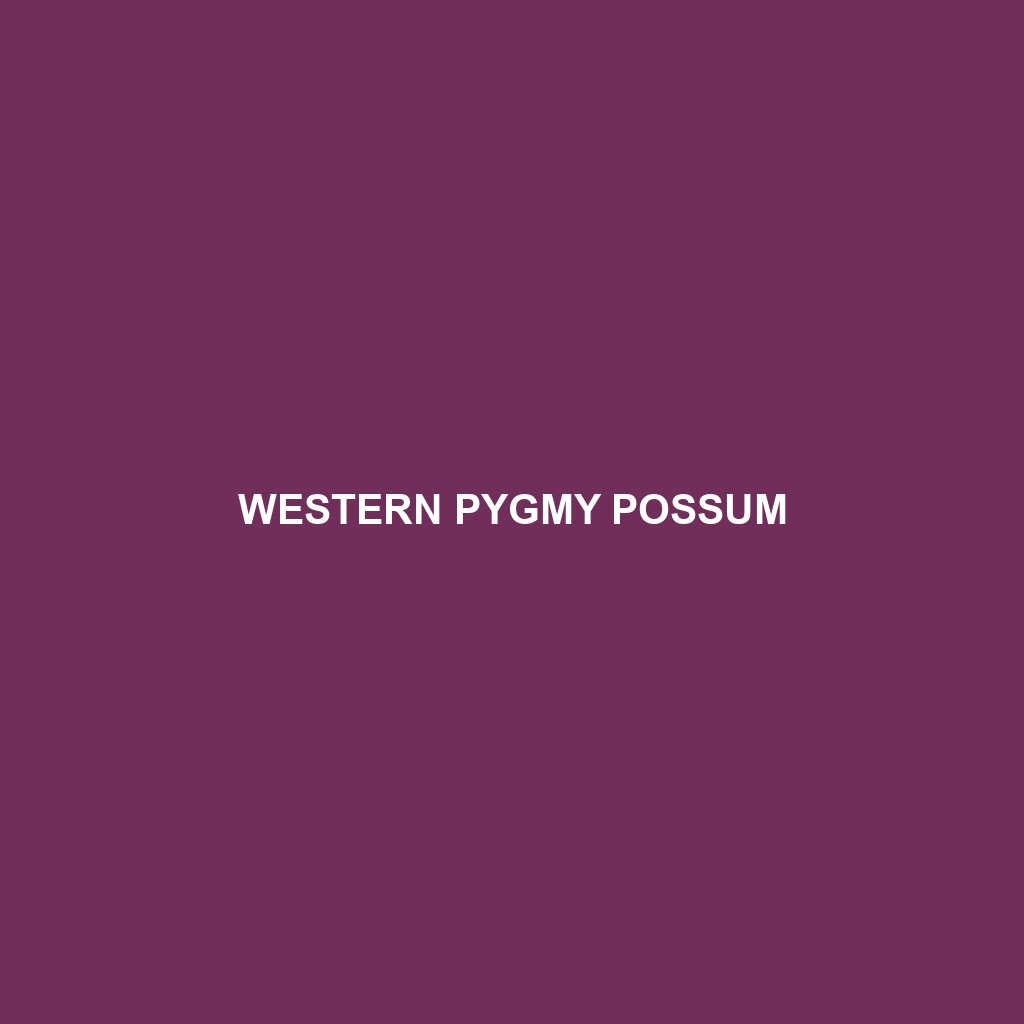Western Pygmy Possum: A Tiny Marvel of the Australian Outback
The Western Pygmy Possum (Cercartetus concinnus) is a remarkable small marsupial native to Australia. Known for its diminutive size and extraordinary adaptability, this tiny possum thrives in diverse habitats, from woodlands to heathlands. With its adorable appearance and vital ecological role, the Western Pygmy Possum is a fascinating creature worthy of admiration and conservation.
Physical Characteristics:
Size: The Western Pygmy Possum is one of the smallest possums, with an average body length of 7-9 cm (2.8-3.5 inches) and a tail length nearly equal to its body. They typically weigh between 10-20 grams (0.35-0.71 ounces).
Coloration: Their fur is soft and dense, usually grey or brown on the back with a lighter, almost white underbelly. This coloration provides excellent camouflage against predators.
Special Features: They have large, forward-facing eyes adapted for nocturnal vision and a prehensile tail, which aids in climbing and balance. Their sharp claws and opposable thumbs are perfect for gripping branches and flowers.
Behavioral Attributes:
Social Interactions: Western Pygmy Possums are mostly solitary but may be seen in pairs during the breeding season. They communicate primarily through scent markings and vocalizations.
Feeding Habits: These possums are omnivorous, feeding on nectar, pollen, insects, and small fruits. They play a crucial role in pollination, particularly for native plants such as banksias and eucalypts.
Ecological Roles: By feeding on insects and aiding in pollination, Western Pygmy Possums help maintain the health of their ecosystems. They also serve as prey for larger predators, thus contributing to the food web.
Habitats and Adaptations:
Habitats: Western Pygmy Possums inhabit a range of environments, including dry sclerophyll forests, woodlands, heathlands, and shrublands. They prefer areas with abundant flowering plants.
Adaptations: Their nocturnal nature and excellent climbing abilities enable them to evade predators and exploit food resources. Their prehensile tails and sharp claws are perfect for navigating their arboreal habitats.
Conservation Status:
Status: The Western Pygmy Possum is currently listed as “Least Concern” by the IUCN Red List, but their populations are affected by habitat loss and fragmentation, primarily due to agricultural expansion and urban development.
Conservation Efforts: Efforts to protect their habitats and promote reforestation with native plants are crucial for their survival. Conservation programs also focus on monitoring populations and mitigating threats from introduced species like cats and foxes.
Fun Facts:
Hibernation: During colder months, Western Pygmy Possums can enter a state of torpor, reducing their metabolic rate to conserve energy.
Pouch Life: Like all marsupials, female possums carry their young in a pouch until they are developed enough to survive outside.
Pollination Heroes: These tiny creatures are vital to the pollination of various Australian native plants, ensuring the propagation of their species and the health of their ecosystems.
In conclusion, the Western Pygmy Possum is a fascinating example of nature’s adaptability and resilience. Understanding their attributes and the roles they play in their ecosystems underscores the importance of their conservation and the preservation of their natural habitats.
